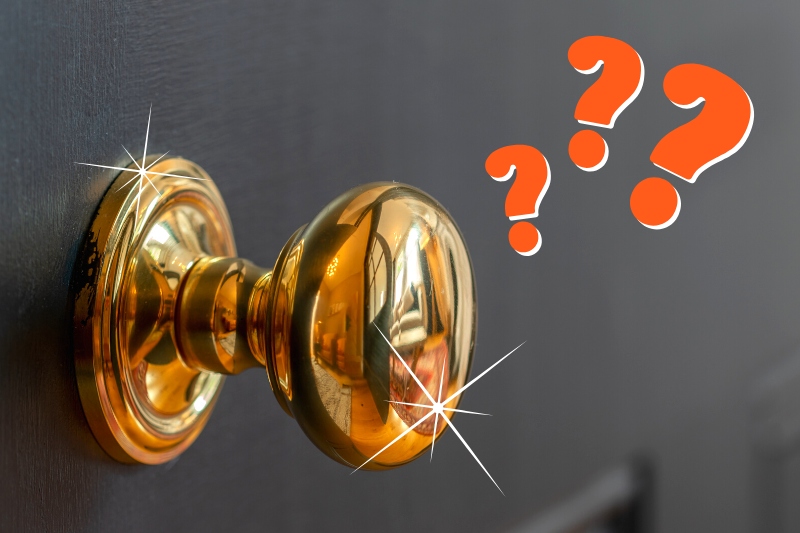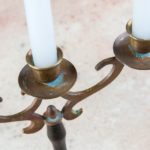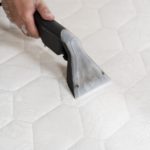After a brief dip in popularity during the 90s, brass has made a comeback! It’s now common to find brass pots, pans, taps, doorknobs, and other household objects around the home.
Although brass can give a luxurious and timeless feel to your interior design, improper maintenance of the metal leads to tarnishing over time.
When brass isn’t frequently cleaned, ongoing exposure to oxygen and water causes the metal to lose its shine. While this may not be the end of the world, it does take away from the beauty of the brass.
If your brass has seen better days, there is no need to despair. It may require a bit of elbow grease, but there are plenty of ways to restore brass without causing any damage to the metal.
Read on to learn how to clean brass quickly and effectively.
What’s the Best Thing to Clean Brass With?
The best thing to clean brass with depends on whether your brass is lacquered or unlacquered.
Lacquer is a protective layer applied to some brass objects. It prolongs the time before tarnishing occurs and keeps your brass looking shinier for longer.
If you want to clean lacquered brass, you should only wipe it down with a damp cloth and washing up liquid to prevent damage to the protective layer.
You can also use this cleaning method on unlacquered brass, but it will likely require a bit of elbow grease.
When cleaning unlacquered brass, you can afford to use a more abrasive cleaner, such as those listed below.
These cleaners will effectively remove any signs of tarnishing from the brass in your home.
Still, we recommend testing your chosen method on an inconspicuous patch of the object first to ensure you don’t damage the surface.
Brass Cleaning Methods
1. Ketchup
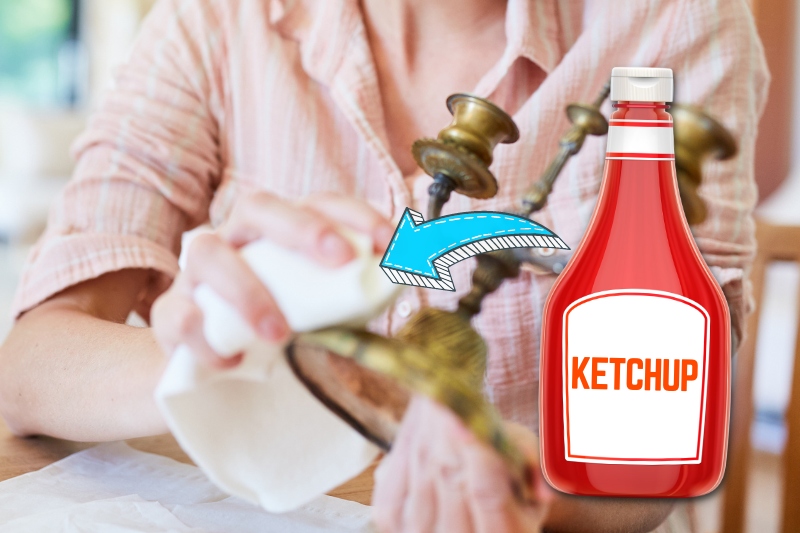
Ketchup is a very cheap condiment that is a staple in many people’s homes. It may taste great on your chips, but it also contains vinegar, making it a good brass cleaner as well.
You can use ketchup to clean tarnished brass by following the below steps:
- Squirt ketchup onto a cloth and rub it all over the brass
- Leave the ketchup to sit for a minute
- Rinse or wipe off the ketchup residue with cold water
- Buff and dry the brass
If there are still tarnished patches after following the above steps, repeat the above process and leave the ketchup to sit for up to an hour.
2. White vinegar, salt and flour
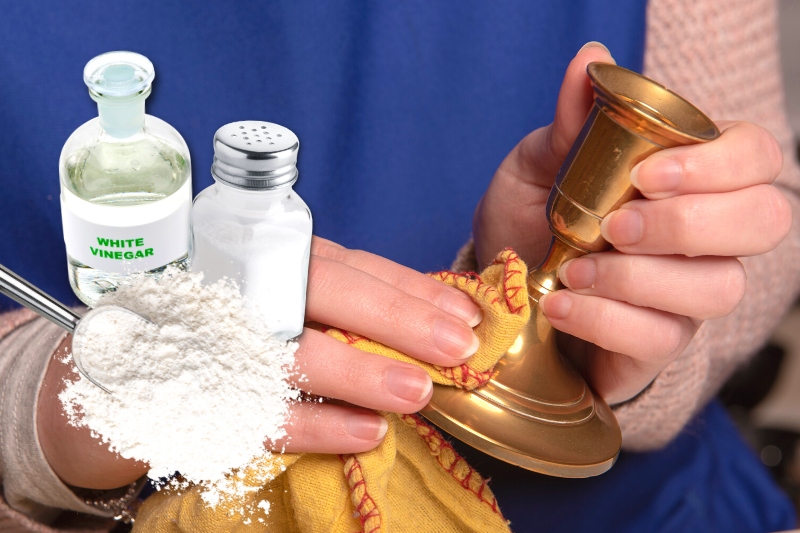
This cleaner also uses ingredients that are found in the majority of households: white vinegar, salt, and flour.
The acidity of the vinegar combined with the abrasiveness of the salt makes an effective cleaner, while the flour helps to bring the ingredients together into a paste.
Follow the below steps to make and use this effective cleaning paste:
- Dissolve one teaspoon of salt in 100 ml of white vinegar
- Add enough flour to form a paste (around two tablespoons)
- Rub the paste onto the brass using a cloth
- Leave the cleaner to sit for 10 minutes
- Rinse or wipe off the cleaner
- Buff and dry the brass
3. White vinegar and salt

If you don’t have any flour to hand, a cleaner similar to that above can be made using just white vinegar and salt. Use the following instructions for the most effective clean:
- Soak a clean cloth in white vinegar
- Dip the cloth in salt so that there is a light coating on the fabric
- Rub the salted area onto the brass until it is spotless
- Rinse or wipe the brass with cold water, then buff and dry it to a shine
4. Lemon and bicarbonate of soda
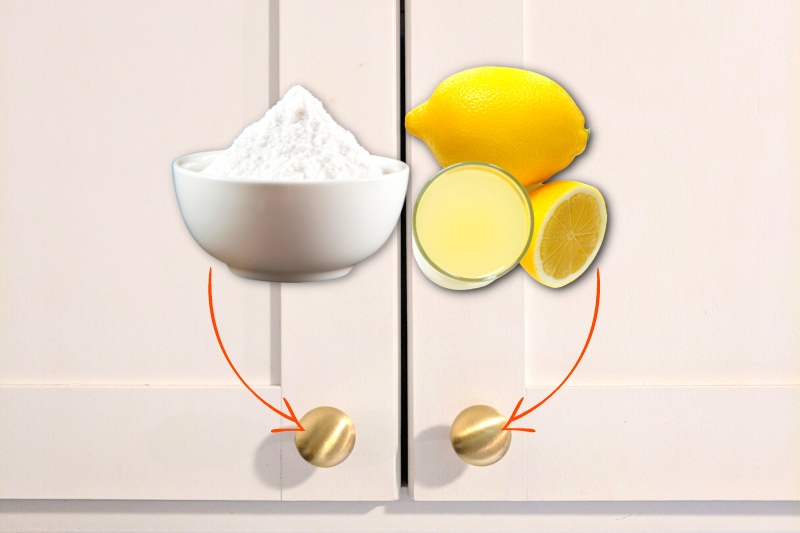
Lemon juice and bicarbonate of soda are both fantastic cleaners on their own, but when combined, they can easily remove any traces of tarnishing from the brass in your home.
For the best results, you will need to follow the below steps:
- Squeeze the juice of half a lemon into a bowl
- Add one teaspoon of bicarbonate of soda and mix well
- Rub the cleaning mixture onto the brass with a cloth
- Add more cleaner as needed until all the tarnished areas are gone
- Rinse or wipe off the remaining residue with cold water
- Buff and dry the brass
5. Lemon and salt
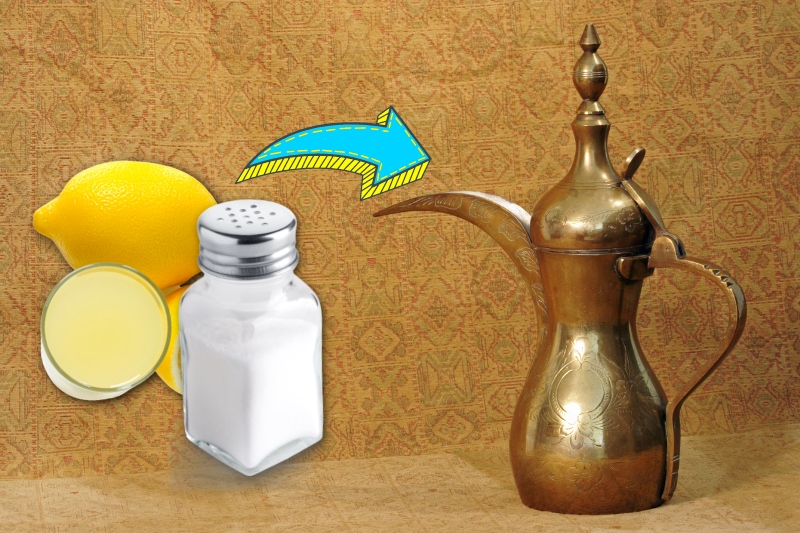
When you don’t have any bicarbonate of soda in the house, lemon juice can easily be combined with salt to produce an effective brass cleaner as well. Simply follow the below steps:
- Saturate a cloth in the juice of half a lemon
- Sprinkle the fabric with salt
- Rub the salted area of the cloth onto the brass
- Continue rubbing at the tarnished areas until the brass is completely clean
- Rinse or wipe the cleaner off the brass, then buff and dry until it shines
6. Toothpaste

This may come as a surprise, but toothpaste makes an excellent brass cleaner when used correctly. This is because toothpaste is mildly abrasive, allowing it to gently scrub away the tarnished metal.
For this purpose, plain white toothpaste is best. To use, you need to:
- Apply a thin layer of toothpaste to the tarnished brass
- Leave the toothpaste to sit for a few minutes
- Polish the brass with a clean cloth until all traces of tarnishing have disappeared
- Rinse or wipe the brass with cold water
- Buff and dry the brass
7. Commercial brass-cleaning products
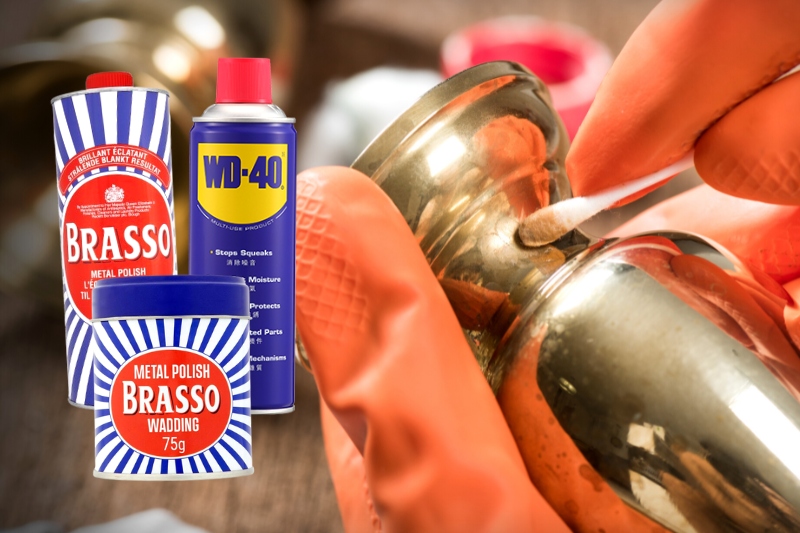
When cleaning brass, you can use a commercial brass cleaner if you’re not keen on any of our alternatives. Use whichever cleaner you buy according to the label instructions for the best results.
Two products we highly recommend are Brasso and WD-40. These are both versatile products that you can also use for other cleaning jobs around your house.
Brasso can be brought in a liquid or wadding form based on your needs and preferences, whilst WD-40 typically comes in a spray can.
Top Tips for Cleaning and Caring for Brass
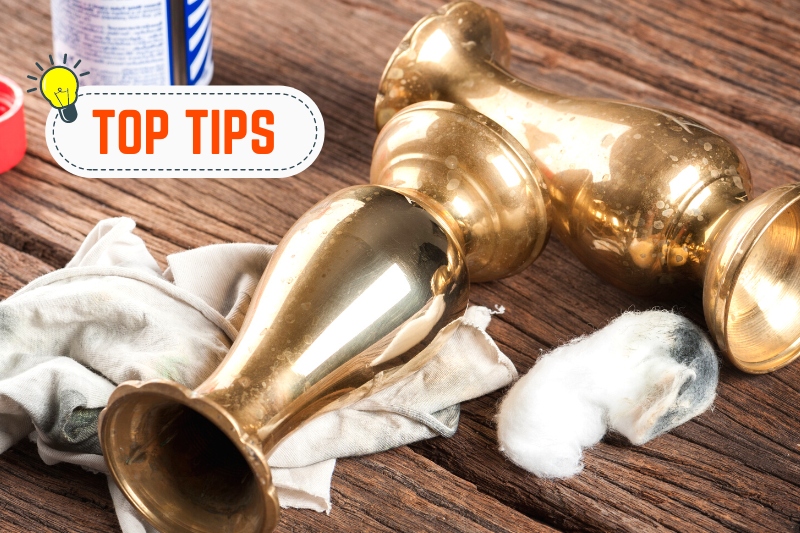
Cleaning tarnished brass often requires a bit of elbow grease, even when using one of our recommended cleaners.
To prevent damage to the brass and keep it in perfect condition for longer, keep the below advice in mind:
- Never put brass in the dishwasher
- Use a microfibre cloth when cleaning to prevent scratches
- Always wash, rinse, and dry brass straight away; never leave it to soak
- Clean brass pots and pans as soon as possible after use
- Avoid touching brass as much as possible, as the oils on your skin will speed up the tarnishing process
- Always have antique brass cleaned professionally to avoid damage to the original surface. The most you should do at home is dust it with a microfibre cloth.
How Can You Tell if Something Is Real Brass?
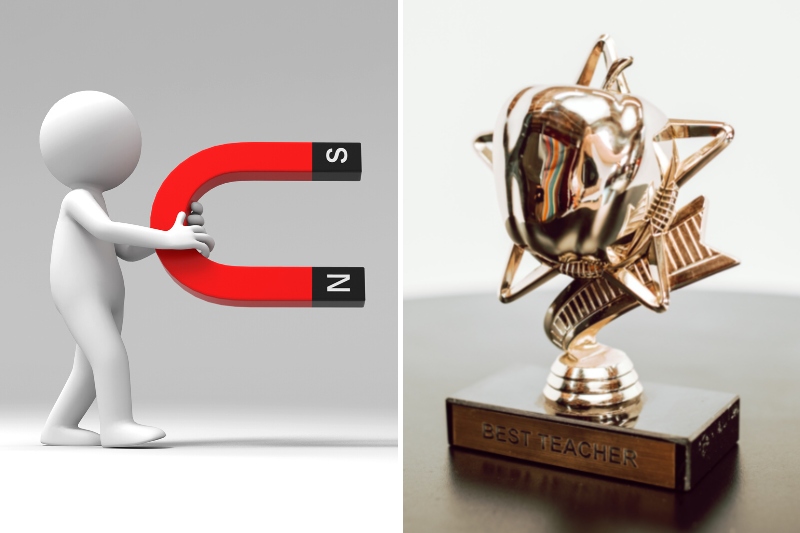
If you have something that looks like brass in your home but are unsure whether it’s real or not, you need to check before using any of the cleaning methods described above. Using these cleaning methods on other metals or brass-plated objects could cause damage to the metal, so it’s always better to be safe than sorry.
The easiest way of determining if something is made of brass is to check whether it is magnetic. If the metal is real brass, a magnet will not stick to it. If it holds a magnet, the object will be made of a different metal instead.

Hannah has a passion for cleaning. She worked her way around Australia by cleaning hostels in exchange for free accommodation and used her cleaning skills to bag a job as a chalet host for a luxury ski company in France.
